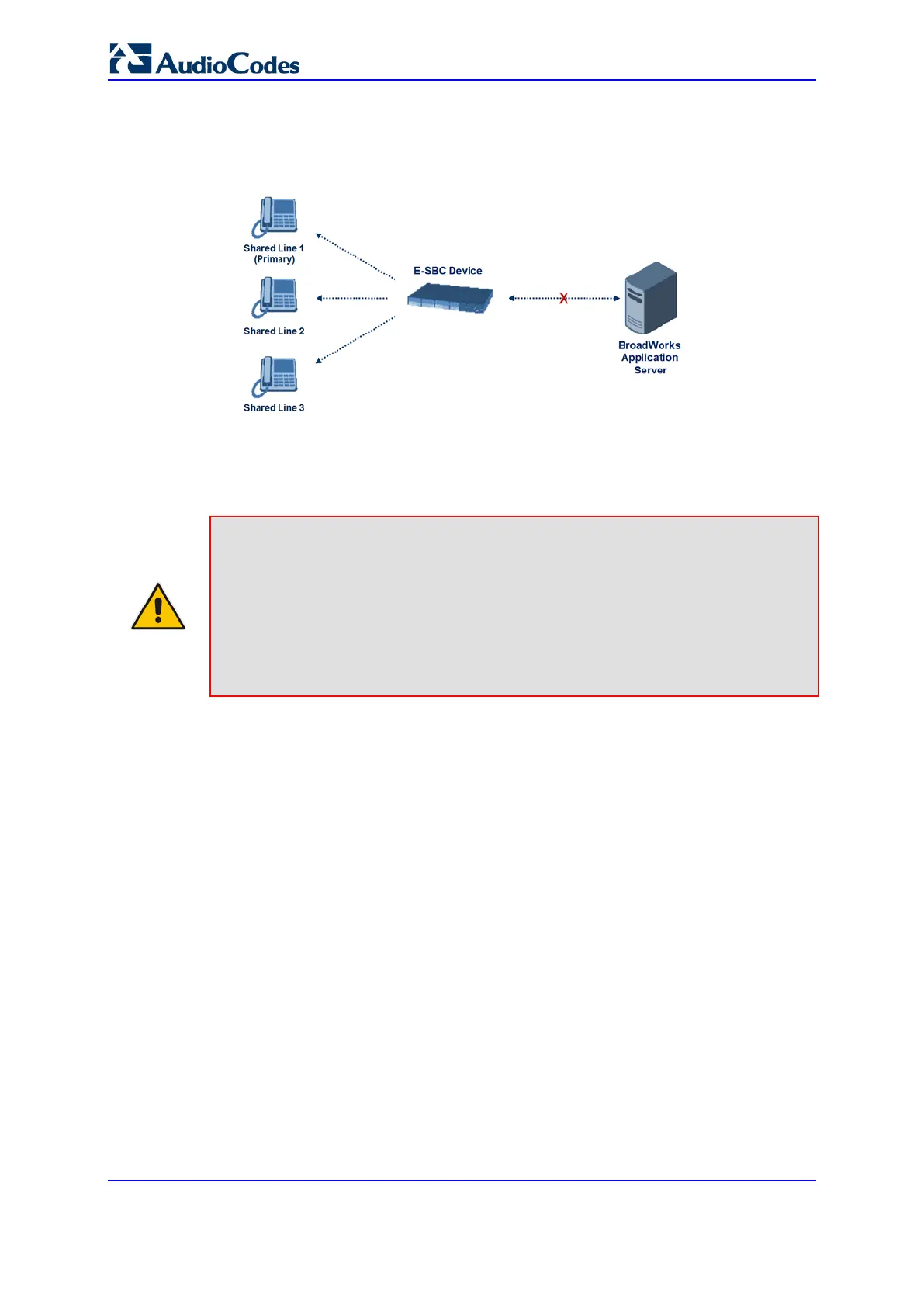User's Manual 784 Document #: LTRT-10632
Mediant 800B Gateway & E-SBC
using the device's call forking feature as described in 'Configuring SIP Forking Initiated by
SIP Proxy' on page 781. Note that incoming calls specific to extensions 601 or 602 ring
only at these specific extensions.
Figure 38-11: Call Survivability for BroadSoft's Shared Line Appearance
To configure this capability, you need to configure a shared-line, inbound manipulation rule
for registration requests to change the destination number of the secondary extension
numbers (e.g. 601 and 602) to the primary extension (e.g., 600). Call forking must also be
enabled. The following procedure describes the main configuration required.
Note:
• The device enables outgoing calls from all equipment that share the same line
simultaneously (usually only one simultaneous call is allowed per a specific shared
line).
• You can configure whether REGISTER messages from secondary lines are
terminated on the device or forwarded transparently (as is), using the
SBCSharedLineRegMode parameter.
• The LED indicator of a shared line may display the wrong current state.
To configure BroadSoft's Shared Line feature:
1. In the IP Groups table (see 'Configuring IP Groups' on page 365), add a Server-type
IP Group for the BroadWorks server.
2. In the IP Groups table, add a User-type IP Group for the IP phone users and set the
'SBC Client Forking Mode' parameter to Parallel so that the device forks incoming
calls to all contacts under the same AOR registered in the device's registration
database.
3. In the IP-to-IP Routing table (see 'Configuring SBC IP-to-IP Routing Rules' on page
709), add a rule for routing calls between the above configured IP Groups.
4. In the Inbound Manipulations table (see 'Configuring IP-to-IP Inbound Manipulations'
on page 741), add a manipulation rule for the secondary extensions (e.g., 601 and
602) so that they also register to the device's database under the primary extension
contact (e.g., 600):
• 'Manipulation Purpose': Shared Line
• Match:
♦ 'Request Type': REGISTER
♦ 'Source IP Group': IP Group created for the users (e.g., 2)
♦ 'Source Username Prefix': Represents the secondary extensions, e.g., 601
and 602
• Action:

